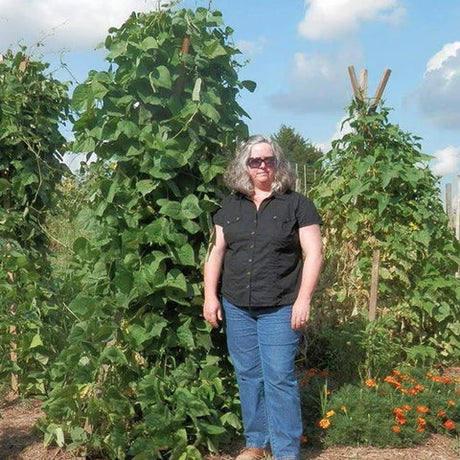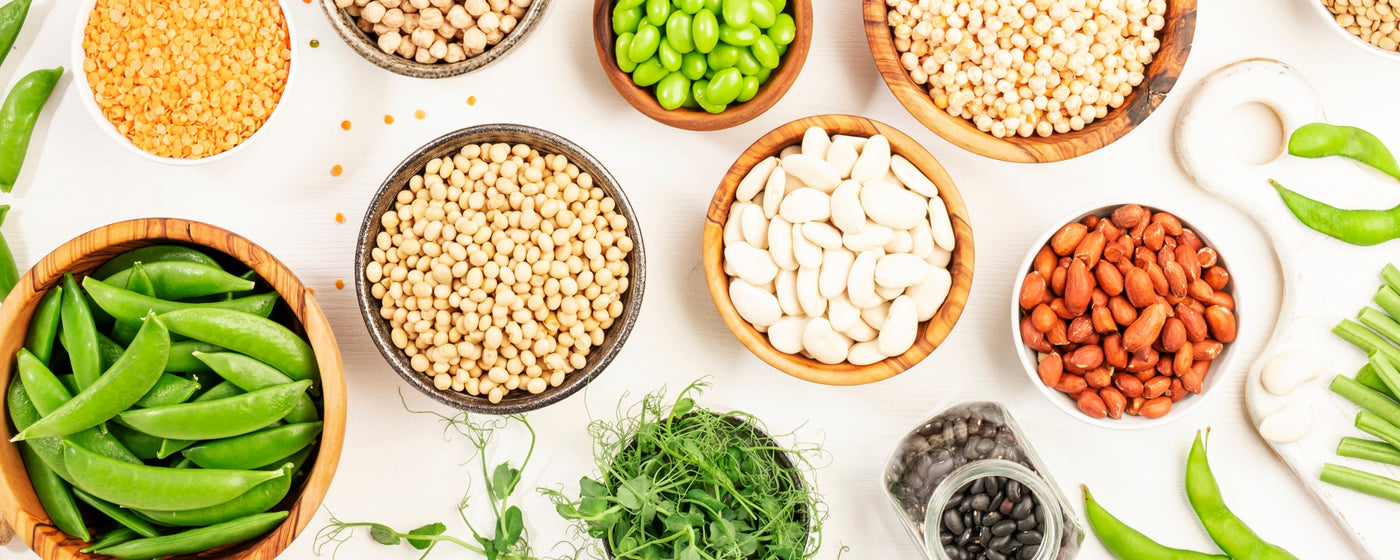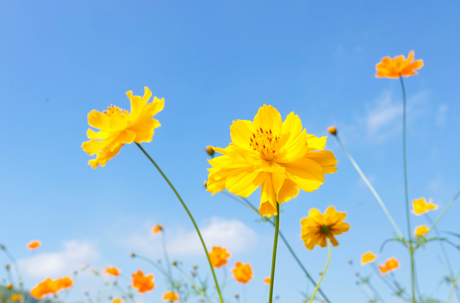You probably can’t choose where to garden, and whatever soil you have in your gardens is the soil you have to work with.
Having said that, you can:

If you’re not familiar with soil, it may all look sort of blackishgrey and crumbly. Soils are quite variable, however – soils a few hundred meters or yards apart can have different properties and support the growth of different crops. Any soil is a complex, constantly changing mix, made up of several components: minerals, organic matter, and living organisms.
Organic Matter
Organic matter is a fancy term for broken-up formerly living things. When animals and plants die, they are gradually broken up into smaller pieces. Some of these pieces are eaten or carried away by creatures large and small, but some of them end up getting incorporated into the topmost layer of soil. Though organic matter almost never makes up more than 10% of soil, and may make up as little as 1 or 2%, it has a disproportionately large impact on a soil’s potential to support plant growth. Like the mineral portion of the soil, organic matter gradually releases the elements it contains for plant growth.
If you think about where the organic matter comes from, however, it makes sense that it would be even more important than the mineral part – dead living things might logically be assumed to contain most or all of the elements needed to grow live living things, while the mineral part of the soil only holds some of these elements.
Organic matter is also even better than clay at holding water and any additional nutrients you might apply in the form of fertilizer. Plants can then pick these up from the organic matter and use them to grow. Organic matter makes soils less dense, easier to move around with tools, easier for plants’ roots to grow through. It tends to make soil look dark, and it tends to be concentrated near the soil surface. If you have a soil that seems to be low in organic matter, that’s something you can do something about. Even if your soil seems rich in organic matter, you can always add more (good gardeners do). You might think you could just add any dead things that you have on hand (woodchips, leaves, whatever), but unfortunately it’s not that simple – not all dead things are created equal. Wood and dry fall leaves are not very nutritious at all compared to stuff that’s wet, green, or otherwise closer to being alive (freshly cut green grass, freshly pulled weeds, manure, coffee grounds, banana peels, etc.). Neither the really dry, bland stuff nor the wet, green juicy stuff is something you want to add to your soil – the best thing to do is make a blend, and the best way to blend them is to compost them. See the compost page for more details on how to create useful organic matter for your
soil.
If you don’t want to bother composting, or you need to improve your soil in a hurry, you can go to a garden center or hardware store and buy bags of organic matter (composted manure or any other soil amendment) that you can add to your soil right away. If you buy something that’s already composted, there’s really no limit other than the size of your pocketbook and the strength of your back to how often or how much organic matter you can safely add to your soil. See preparing a new garden plot for instructions on how to incorporate organic matter into your soil (you can use these instructions even if you are already gardening).
Minerals
If you pick up a handful of soil, between 90 and 99% of what you’re holding was originally rock. Over millions of years, water and wind and freezing and thawing wear rocks into small or very small pieces. Soil scientists group these pieces into three categories by size. Sand particles are the largest, ranging in size from 2.1 millimeters (1/12 in) down to 0.05 millimeters (1/500 in) in diameter. Silt particles are next smallest, ranging in size from 0.05 millimeters (1/500 inch) down to 0.002 millimeters (less than 1/12,500 in). Clay particles are even smaller – so small that individual particles cannot be distinguished even under a fairly powerful microscope.
Theoretically, a soil could be all sand, all silt, or all clay, but most soils are made of at least some of each of these three particles. The soil triangle (see picture at right) is a tool used by soil scientists to classify soils. You may not be able to tell exactly where your soil fits on the triangle, but the soil itself can tell you some-thing. Just feeling it is a good start -- sand feels coarse and rough between your fingers, silt feels gritty, and clay feels sticky (at least when wet). You can also learn what’s in your soil by watching it over time. If, when your soil is dry, for example, it develops large cracks, it probably has a high clay content. If you can walk on it without getting your shoes dirty even when it is wet, it probably has a high sand content.
Sand, silt, and clay come from hard, dead rocks, so you might think that these soil components would do little more than serve as a physical medium for plants to put their roots into. In fact, however, they play very important roles in assisting plant growth. Rocks are made of some of the same essential elements that our bodies are, and the soil mineral particles that come from them gradually release these elements such that plants can take them up. Clay (and to a lesser extent silt) also plays important roles with respect to water availability and the usefulness of any fertilizer that you might apply.
Clay particles are very small and very numerous, and therefore have an enormous total surface area which also happens to be electrically charged. Important plant nutrients that we apply in fertilizers are also electrically charged, and the nutrients interact with the charged clay and stick to it such that they stay around until plant roots need them. Because clay particles are small and numerous, there are also many small spaces between them where water can be held very firmly – this too can be taken up by plants as needed. Soils that lack clay must be watered and fertilized often because the soil can’t balance, or “buffer,” the availability of nutrients like it could if there were clay present.
Because different plants have different needs, there’s no particular mixture of sand, silt, and clay that’s ideal for all vegetables. In theory, you could change the properties of your soil by adding large amounts of one or the other sizes of minerals. While people do occasionally do this (by adding sand, for example, to help soils drain better), the more common way to improve soil for gardening is to try to increase the soil’s organic matter content (see below).
Living Organisms
While soil itself is not alive, any soil that is good for growing vegetables contains enormous numbers of living organisms.
Most of these creatures are far too small for you to see. Bacteria are the most abundant of these – 28 g (1 oz) of soil can contain more than 30 billion of them! Fungi (related to mushrooms) are almost as abundant, followed by other less familiar forms of microscopic life. These tiny creatures break down dead things, making the nutrients they contain available for plant growth. Less numerous but also very important are the creatures we can see – earthworms, insects, small mammals (mice, moles, voles), and others.
These creatures also help recycle nutrients, and they also make tunnels that help air and water move through the soil. Whether they’re plants you want or ones you don’t (like weeds), plants themselves are important to the soil. Plants called legumes (a group that includes beans and peas) collect nitrogen from the air and make it available in the soil for other organisms to use.
All plants put roots through the soil, and when these die and decay, the resulting channels help with air and water movement.
Plants with very deep roots can help bring nutrients up from very deep in the ground that are otherwise unavailable.
A quick note on soil health and soil erosion
As discussed above, soil is not just a place for your plants to stick their roots. While gardening inevitably involves some disturbance of the soil, you cannot dig it up, turn it over, or move it from one place to another and expect it to be the same as it was before.

- When you harvest produce from your garden, you are removing nutrients. These must get returned somehow. Some combination of fertilizer, soil amendments, and/or mulch is essential.
- Soil with nothing growing on it is vulnerable to erosion, which is the removal by blowing wind and flowing water of the mineral and organic particles needed to support plant growth. Because it is concentrated near the soil surface, organic matter is especially vulnerable to erosion. Soil erosion often happens a little bit at a time, without anyone noticing, though heavy rains may leave channels in the soil that tell you soil has been removed and carried away. In nature, bare, exposed soil is rare and soil erosion rates are low. If there is a natural disaster like a mudslide or volcanic eruption that leaves the soil uncovered, there may be a lot of erosion for a short time, but plants quickly take advantage of the open space to grow. In these circumstances, erosion is usually brought under control fairly quickly without any human intervention. In gardens, however, we not only uncover and disturb soil repeatedly, but we try to prevent plants (weeds) from covering it up again. This can lead to substantial erosion, which in the long run can make your garden much less productive. Soil is hard to replace once it’s gone – in an undisturbed forest or grassland, it can take 500 to 1,000 years to produce 2.5 cm (1 in) of soil. For this reason, gardeners have a responsibility to keep soil covered as much of the time as possible – if not with plants, then with mulch of some sort. Mulching is particularly important over the winter, when winds are strong and there are no living plants, and in the spring, when plants are small and it rains frequently.
← GO BACK TO GROW GUIDES













































